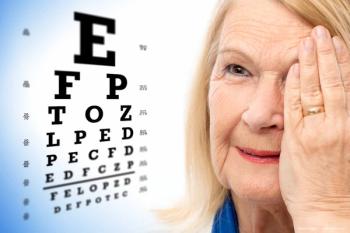
COPHy 2023: Restorative therapies and the path to them
In a keynote lecture at the 14th Annual Congress on Controversies in Ophthalmology in Lisbon, Hendrik Scholl, MD, co-founder and director of the Institute of Molecular and Clinical Ophthalmology Basel, discussed its mission to unravel the mysteries of vision and human eye disease.
Reviewed by Hendrik Scholl, MD
The Institute of Molecular and Clinical Ophthalmology Basel (IOB) is on a mission: advance the understanding of vision and human eye diseases and develop new therapies for vision loss. And in its short 5-year life, it has made remarkable strides to meet those lofty goals.
Hendrik Scholl, MD, the co-founder and director of IOB, and Professor and Chairman of the Department of Ophthalmology, University of Basel, both in Basel, Switzerland, described the research path of IOB, its accomplishments, and the efforts at visual restoration via cone optogenetics during his delivery of the keynote lecture at the 14th Annual Congress on Controversies in Ophthalmology, held at the Epic Sana Hotel in Lisbon, Portugal.
An ambitious timeline
In ophthalmology, according to Scholl, medical innovation has been slow for a number years, partly due to the lack of the biologic understanding of the mechanisms of vision and its diseases.
Considering the unmet needs in a large number of diseases, unique and pioneering science and its translation into the clinic are requisites. The disease statistics are daunting, ranging from an estimated “low” of 2 million people affected by inherited retinal diseases to “highs” of 2.6 billion affected by myopia in 2020 that will burgeon to 4.8 billion by 2050.
IOB was an idea in 2017 that was ignited by these statistics. After the official start in 2018, by 2020, set-up operations and technology platforms were in place, third party funding was established, and the signature projects of cone optogenetics and base editing in Stargardt’s disease were in focus. In 2021, investigators completed the pre-clinical development of the cone optogenetics therapy, achieved breakthrough results in base editing for Stargardt’s disease, and deployed IOB's human retina cell atlas worldwide.
During 2022, the third Swiss National Science Foundation Eccellenza Professorship was established at IOB and its PhD program for translational medicine was launched.
Prime focus: cone photoreceptors
The research started with the basics, i.e., benchwork into the components of the human retina.1 That study reported the following highlights: “the presence of light-sensitive, multilayered human retinal organoids with functional synapses; 285,441 transcriptomes from light-responsive human retinas and retinal organoids; the convergence of organoid cell types to adult peripheral retinal cell types; and the linking of retinal diseases to human retinal and retinal organoid cell types.”
The work at IOB is centered on the cone photoreceptors in the retina because they are considered the most important for vision with the greatest potential for reactivation. At IOB; we have just completed a large screen using 20,000 human retinal organoids to identify compounds that save and compounds that damage human cones.
“For safety, we are looking for drugs that cause cone degeneration as a side effect. For neuroprotective treatment development, we are looking for drugs that slow cone degeneration,” Scholl said.
Of the various key cell types in the retina, including the dormant cones, bipolar cells, amacrine cells, and ganglion cells, the cones seem the prime candidates for reactivation in patients that are blind from neurodegenerative diseases of the retina and macula. Previous studies have shown that in the late stages of retinitis pigmentosa, for example, the rods have died while the macula still retains cone cell bodies with very short or absent outer segments.
All roads at IOB have led to the EyeConic Eye Vision Study (NCT05294978), a worldwide effort that is underway and includes 12 centers, that has the goal of identifying patients affected by monogenic retinal dystrophies with significantly retained dormant cones. Thus far, data from460 eyes of 290 patients have been included and analyzed.
Scholl reported that the study population shows wide distribution of foveal cone volumes and significant overlap with healthy controls. The data analysis indicates that a significant fraction of blind patients retain adequate cone cell volume in the central retina amenable for therapy. About 45% of patients have normal (larger than -2 standard deviations) cone volumes and thus are ideal candidates for cone optogenetic vision restoration.
“While vision restoration approaches such as retinal prostheses and stem cell transplantation have yielded some results, significant clinical benefit has not been accomplished,” Scholl concluded. “We believe that optogenetic vision restoration is superior and targeting cone cells with this approach has the best chance to restore useful vision in patients that are blind from retinitis pigmentosa or geographic atrophy.”
Reference:
1. Cowan CS, Renner M, Gross-Scherf B, et al. Cell types of the human retina and its organoids at single-cell resolution. Cell. 2020;182(6):1623-1640.e34; doi: 10.1016/j.cell.2020.08.013.
Newsletter
Get the essential updates shaping the future of pharma manufacturing and compliance—subscribe today to Pharmaceutical Technology and never miss a breakthrough.













































